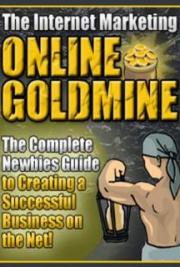References
Ackoff, R.L., A Concept of Corporate Planning, Wiley & Sons, 1970.
Afuah, A. & C.L. Tucci. 2001. Internet Business Models and Strategies: Text and Cases. Boston: McGraw– Hil .
Ahmed, P.K., and Shepherd, C. (2010) Innovation management: Context, strategies, systems and processes, Financial Times Prentice Hal , U.K., Pearson Education Limited.
AICPA. 1994. Improving Business Reporting – A Customer Focus: Meeting the Information Needs of Investors and Creditors; A Comprehensive Report of the Special Committee on Financial Reporting. New York: American Institute of Certified Public Accountants.
Al-Debie, M. & M. Walker. 1999. Fundamental Information Analysis: An extension and UK Evidence. British Accounting Review, Vol. 31, No. 3, pp. 261-280.
Allee, V. (2011), Value Networks and the true nature of col aboration. Free ebook accessible from www.valuenetworksand col aboration.com (Accessed May 20, 2011)

Allee, V. 2000. The value evolution Addressing larger Implications of an intellectual capital and intangibles perspective. Journal of Intel ectual Capital, Vol. 1, No. 1, pp. 17-32.
Alt, R. & H.-D. Zimmermann. 2001. Preface: Introduction to Special Section – Business Models. Electronic Markets, Vol. 11, No. 1, pp. 3-9.
Amit, R. & C. Zott. 2001. Value Creation In E-Business. Strategic Management Journal, Vol. 22, No. 6/7, pp. 493-520.
Anderson, P. & Tushman, M.L., “Technological Discontinuities and Dominant Designs – a cyclical model of technological change”, Administrative Science Quarterly, 35, pp. 604-633, 1990
Andrews, K.R. 1980. The Concept of Corporate Strategy. Homewood: Richard D. Irwin.
Ansoff, I. 1965. Corporate Strategy. New York: McGraw-Hil .
Arvidsson, S. 2003. The Demand and Supply of Information on Intangibles: The Case of Knowledge– Intense Companies. Ph.D Thesis, Institute of Economic Research, Lund University.
Bal , R. 1996. The Theory of Stock Market Efficiency: Accomplishments and Limitations. Journal of Financial Education, spring, pp. 1-13.
Barker, R. 1997. Information Flows between Finance Directors, Analysts and Fund Managers: A Study of Accounting Information, Corporate Governance and Stock Market Efficiency. Judge Institute of Management Studies, Cambridge University, Research Paper No.1997/16.
Barker, R. 1998. The Market for Information: Evidence from Finance Directors, Analysts and Fund Managers. Accounting and Business Research, Vol. 29, No. 1, pp. 3-20.
Barron, O.E., D. Byard, C. Kile & E.J. Riedl. 2002. High-Technology Intangibles and Analysts’ Forecasts. Journal of Accounting Research, Vol. 40, No. 2, pp. 289-312.
Barth, M.E., R. Kasznik & M.F. McNichols. 2001. Analyst Coverage and Intangible Assets. Journal of Accounting Research, Vol. 39, No. 1, pp. 1-34.
Beattie, V. & K. Pratt. 2001. Business Reporting: Harnessing the Power of the Internet for Users. Edinburgh: Institute of Chartered Accountants of Scotland.
Beattie, V. 1999. Business Reporting: The Inevitable Change. Edinburgh: Institute of Chartered Accountants of Scotland.
Beattie, V. and K. Pratt. 2002. Voluntary Annual Report Disclosures: What Users Want. Edinburgh: Institute of Chartered Accountants of Scotland.
Bel , T. & I. Solomon. 2002. Cases in Strategic – Systems Auditing. KPMG LLP and the University of Illinois at UrbanaChampaign Business Measurement Case Development and Research Program.
Bel , T., F. Marrs, I. Solomon & H. Thomas. 1997. Auditing Organizations Through a Strategic-Systems Lens: The KPMG Business Measurement Process. KPMG LLP.
Bettis, R.A.; Hitt, M.A., “The New Competitive Landscape”, Strategic Management Journal, Summer Issue, vol. 16, pp. 7-19, 1995
Betz, F. 2002. Strategic Business Models. Engineering Management Journal, Vol. 14, No. 1, pp. 21-27.
Beunza, D. & R. Garud. 2004. Security Analysts as Frame-makers. Working paper, Department of Economics and Business, Universitat Pompeu Fabra, Barcelona.
Bhal a, S.K., The Effective Management of Technology, Batelle Press, 1987.
Blair, M. & S. Wallman. 2001. Unseen Wealth. Washington D.C: Brookings Institution.
Block, S.B. 1999. A Study of Financial Analysts: Practice and Theory. Financial Analysts Journal, Vol. 55, No. 4 July/August, pp. 86-95.
Boedker, C. 2005. Australian Guiding Principles on Extended Performance Management: A Guide to Better Managing, Measuring and Reporting Knowledge Intensive Organisational Resources. Society for Knowledge Economics, Melbourne.
Boulding, K.E. 1956. General Systems Theory – The Skeleton of Science. Management Science, Vol. 2, No. 3, pp. 197-208.
Boulton, R.E.S., B.D. Libert & S.M. Samek. 1997. Cracking the Value Code: How successful businesses are creating wealth in the New Economy. New York: Harper Collins Publishers.
Boulton, R.E.S., B.D. Libert & S.M. Samek. 2000. A Business Model for the New Economy. Journal of Business Strategy, Vol.21, No. 4 July-August, pp. 29-35.
Bouwman, M.J., P. Frishkoff & P.A. Frishkoff. 1995. The Relevance of GAAP-Based Information: A Case Study Exploring Some Uses and Limitations. Accounting Horizons, Vol. 9, No. 4, pp. 22-47.
Bouwman, M.J., P.A. Frishkoff & P.Frishkoff. 1987. How do Financial Analysts Make Decisions? A Process Model of the Investment Screening Decision. Accounting, Organizations and Society, Vol. 12, No. 1, 1-29.
Bray, M. 2002. New Directions in Business: Performance Reporting, Communication and Assurance. The Institute of Chartered Accountants in Australia.
Bray, M. 2010. The Journey to Better Business Reporting: Moving Beyond Financial Reporting to Improve Investment Decision Making. KPMG Australia.
Brown, P.R. 1997. Financial Data and Decision-Making by Sell-Side Analysts. The Journal of Financial Statement Analysis, Spring, pp. 43-48.
Bruxelles: European Commission Directorate-General Science, Research and Development.
Bukh, P.N. & U. Johanson. 2003. Research and knowledge interaction: guidelines for intellectual capital reporting. Journal of Intel ectual Capital, Vol.4, No.4, pp. 576-588.
Bukh, P.N. 2002. Disclosure of intellectual capital – Indicators or models? A matter of accounting or strategy. Working Paper, Aarhus School of Business.
Bukh, P.N. 2003. The Relevance of Intellectual Capital Disclosure: A Paradox? Accounting, Auditing &

Bukh, P.N., C. Nielsen, P. Gormsen & J. Mouritsen. 2005. Disclosure of Intellectual Capital Indicators in Danish IPO Prospectuses. Accounting, Auditing & Accountability Journal, Vol. 18, No. 6, pp. 713-732
Bukh, P.N., H.T. Larsen & J. Mouritsen. 2001. Constructing Intellectual Capital Statements. Scandinavian Journal of Management, Vol. 17, No. 1, pp. 87-108.
Burcham, R. 2000. New Pharma Business Model: Can You Survive IT? Pharmaceutical Executive, Vol. 20, No. 11, pp. 94-100.
Burgelman, R.A. & Sayles, L.R., Inside Corporate Innovation, The Free Press, 1986
Caramanolis-Çötelli, B., L. Gardiol, R. Gibson-Asner & N.S. Tuchschmid. 1999. Are Investors Sensitive to the Quality and the Disclosure of Financial Statements? European Finance Review, Vol. 3, No. 2, pp. 131-159.
Catasús, B. & J.-E. Gröjer. 2003. Intangibles and Credit Decisions: Results from an Experiment. European Accounting Review, Vol. 12, No. 2, pp. 327-356.
Chaharbaghi, K., C. Fendt & R. Willis. 2003. Meaning, Legitimacy and Impact of Business Models in Fast-Moving Environments. Management Decision, Vol. 41, No. 4, pp. 372-382.
Chandler, A.D., Jr. 1962. Strategy and Structure: Chapters in the History of the Industrial Enterprise.
Cambridge: The M.I.T. Press.
Chesborough, H. (2007) Open business models. How to thrive in the new innovation landscape, Boston: Harvard Business School.
Chesbrough, H. & R.S. Rosenbloom. 2002. The Role of the Business Model in Capturing Value from Innovation: Evidence from Xerox Corporation’s Spin-Off Companies. Industrial and Corporate Change, Vol. 11, No. 3, pp. 529-555.
Chesbrough, H. 2006. Open Business Models: How to Thrive in the New Innovation Landscape, Boston: Harvard Business School Press, 2006.
Chesbrough, H.W., “The era of open innovation”, Sloan Management Review, vol. 44, no. 3, pp. 35-41, 2003
Child, J. 1972. Organizational Structure, Environment and Performance: The Role of Strategic Choice. Sociology, Vol. 6, No. 1, pp. 1-22.
Christensen C.M. (1997) The innovator’s dilemma, Boston, MA, Harvard Business School Press.
Christensen, C.M. 2001. The Past and Future of Competitive Advantage. MIT Sloan Management Review, Vol. 42, No. 2, pp. 105-109.
Christensen, J.A. 2003. Why do Accounts Convey so Little Information? Nyviden, Special Issue, October (In Danish).
Clark, K.B., “What Strategy can do for Technology”, Harvard Business Review, November-December, 1989.
Clark, T., A. Osterwalder & Y. Pigneur. 2012. Business Model You: A One-Page Method For Reinventing Your Career. Wiley.
Cooper, R. 1992. Formal Organization as Representation: Remote Control, Displacement and Abbreviation. In: Reed, M. & M. Hughes (Eds.), Rethinking Organization: New Directions in Organization Theory and Analysis. London: Sage, pp. 254-272.
Covin, T.J. & B.P. Stivers. 1997. Knowledge Management Focus in US and Canadian Firms. Creativity and Innovation Management, Vol. 6, No. 3, pp. 140-150.
Crozier, R. & R. Ranyard. 1997. Cognitive Process Models and Explanations, In Ranyard, R., R Crozier & O. Svensson (Eds.), Decision Making: Cognitive Models and Explanations. London: Routledge, pp. 5-20.
Czuchry, A.J. & M.M. Yasin. 2003. Improving E-Business with a Baldrige-Based Methodology. Information Systems Management, Vol. 20, No. 3 Summer, pp. 29-38.
D’Aveni, R.A. (1994) Hypercompetition. New York: The Free Press.
DATI. 1999. Developing Intellectual Capital Accounts: Experiences from 19 Companies, Copenhagen:
Danish Agency for Trade and Industry.
DATI. 2001 A Guideline for Intellectual Capital Statements – A Key to Knowledge Management. Copenhagen: Danish Agency for Trade and Industry. (www.mvtu.dk/icaccounts)
Daum, J.H. 2002. Intangible Assets and Value Creation. Chichester: John Wiley & Sons Ltd
Day, J.F.S. 1986. The Use of Annual Reports by UK Investment Analysts. Accounting and Business Research, Vol. 16, No. 64, pp. 295-307.
De Carolis, D. 2003. Competencies and imitability in the pharmaceutical industry: An analysis of their relationship with firm performance. Journal of Management, vol. 29, no. 1, pp. 27-50.
Delmar, D. R. 2003. The Rise of the CSO. Journal of Business Strategy, Vol. 24, No. 2, pp. 8-10.
Desai, H., B. Liang & A.K. Singh. 2000. Do All-Stars Shine? Evaluation of Analyst Recommendations. Financial Analysts Journal, Vol. 56, No. 3 May/June, pp. 20-29.
Dikolli, S.S & S.C. Kulp. 2003. Interrelated Performance Measures, Interactive Effort and Optimal Incentives. Working paper, Social Science Research Network Electronic Paper Collection.
DiPiazza, S.A. Jr. & R.G. Eccles. 2002. Building Public Trust: The Future of Corporate Reporting. New York: Wiley.
Dodgson, M., Gann, D., and Salter, A. (2006) The role of technology in the shift towards open innovation: The case of Procter & Gamble. R&D Management, Vol. 36, No. 3, pp. 333-346.
Drejer, A., Strategic Management and Core Competencies, Quorum Books, 2002.
Drucker, P.F., Innovation and Entrepreneurship, Harper & Row, 1985.
Drucker, P.F.: The Practice of Management, Harper and Row, 1958.
Dussage, P., Hart, S. & Ramanatsoa, B., Strategic Technology Management, Wiley and Sons, 1991.

Eccles, R. G. & S.C. Mavrinac. 1995. Improving the Corporate Disclosure Process. Sloan Management Review, Vol. 3, No. 4 Summer, pp. 11-25.
Eccles, R.G. 1991. The Performance Measurement Manifesto. Harvard Business Review, Vol. 69, No. 1, pp. 131-137.
Eccles, R.G., R.H. Herz, E.M. Keegan & D.M. Phillips. 2001. The ValueReporting Revolution: Moving Beyond the Earnings Game. New York: John Wiley & Sons.
Edvinsson, L. & M.S. Malone. 1997. Intel ectual Capital. London: Piatkus
Elkington, J. 1997. Cannibals with Forks: the Triple Bottom Line of 21 st Century Business. Oxford: Capstone.
Eustace, C. 2001. The Intangible Economy: Impact and Policy Issues. Report of the High Level Expert Group on the Intangible Economy. Brussels: European Commission.
Fenigstein, T. 2003. Issues Arising in the Valuation of Hi-Tech Companies. PricewaterhouseCoopers LLP.
Fielt, E. 2011. Business service management: understanding business models. Eveleigh NSW: Smart Services CRC Pty Ltd
Fincham, R. & R. Roslender. 2003. The Management of Intellectual Capital and its Implications for Business Reporting. Edinburgh: The Institute of Chartered Accountants of Scotland.
Fisken, J. & J. Rutherford. 2002. Business Models and Investment Trends in the Biotechnology Industry in Europe. Journal of Commercial Biotechnology, Vol. 8, No. 3, pp. 191-199.
Fogarty, T.J. & R.K. Rogers. 2005. Financial Analysts’ Reports: An Extended Institutional Theory Evaluation. Accounting, Organizations and Society, Forthcoming.
Francis, J. & D. Philbrick. 1993. Analysts’ Decisions as Products of a Multi-Task Environment. Journal of Accounting Research, Vol. 31, No. 2, pp. 216-230.
Frankel, R., S.P. Kothari & J.P. Weber. 2002. Determinants of the Informativeness of Analyst Research, Working Paper 4243-02, MIT Sloan School of Management, Cambridge.
Funk, K. 2003. Sustainability and Performance. MIT Sloan Management Review, Vol. 44, No. 2 Winter, pp. 65-70.
Galbraith, C.S. & G.B. Merril . 2001. IPO Performance in Business to Business “B2B” E-Commerce Firms: Effects of Strategy and Industry. Managerial Finance, Vol. 27, No. 7, pp. 1-15.
Gal augher, J.M. 2002. E-Commerce and the Undulating Distribution Channel. Communications of the Association for Computing Machinery, Vol. 45, No. 7, pp. 89-95.
Garcia, C. E. & L. Sanz-Menendez (Eds.),: Management and Technology. COST A3, Volume 5.
Garcia-Ayuso, M. 2003. Factors Explaining the Inefficient Valuation of Intangibles. Accounting, Auditing & Accountability Journal, Vol. 16, No. 1, pp. 57-69.
Ghosh, P. 2002. The Advent of Information Industrials. Journal of Business Strategy, Vol. 23, No. 5, pp. 43-47.
Giertz, E. 2000. Measuring Success: Identifying Performance Indicators. Malmö: Celemi.
Gniewosz, G. 1990. The Share Investment Decision Process and Information Use: An Exploratory Case Study. Accounting and Business Research, Vol. 20, No. 79, pp. 223-230.
Gonedes, N.J. 1976. The Capital Market, the Market for Information, and External Accounting. The Journal of Finance, Vol. 31, No. 2, pp. 611-630.
Govindarajan, V. & A.K. Gupta. 2001. Strategic Innovation: A Conceptual Road Map. Business Horizons, Vol. 44, No. 4, pp. 3-12.
Govindarajan, V. & C. Trimble, C., ”Achieving breakthrough growth: From idea to execution.” Ivey Business Journal, vol. 70, no. 3, January/February Issue, pp. 1-7, 2006.
Govindarajan, V. & Trimble, C., “Strategic Innovation and the Science of Learning”, Sloan Management Review, Winter Issue, pp. 67-75, 2004.
Grupp, R.W. & L. Gaines-Ross. 2002. Reputation management in the biotechnology industry. Journal of Commercial Biotechnology, Vol. 9, No. 1, pp. 17-26.
Gupta, I., “Strategic Innovation: A Conceptual Road Map”, Business Horizons, July/August, pp. 3-12, 2001.
Gaarder, K. 2003. Business Models – What are They and how do we Design Them? R&D Report R 21/2003, Paper presented at Eurescom Summit 2003. Fornebu: Telenor Communications.
Hamel, G. & P. Skarzynski. 2001. Innovation: The New Route to Wealth. Journal of Accountancy, Vol. 192, No. 5, pp. 65-68.
Hamel, G. & Prahalad, C.K., Competing for the Future, Harvard Business School Press, 1994.
Hamel, G. & Prahalad, C.K., Strategy as Stretch and Leverage, Harvard Business Review, no. 2, pp. 75– 84, 1993.
Hamel, G. 2000. Leading the revolution. Boston: Harvard Business School Press.
Hammer, M., “Reengineering Work: Don´t Automate, Obliterate”, Harward Business Review, July-August 1993.
Hansson, T., J. Ringbeck & M. Franke. 2002. Flight for Survival: A New Business Model for the Airline Industry. Strategy + Business, Vol. 31, pp. 1-8.
Hedman, J. & T. Kalling. 2001. The Business Model: A Mean to understand the Business Context of Information and Communication Technology. Working paper 2001/9, Institute of Economic Research, School of Economics and Management, Lund University.
Hedman, J. & T. Kalling. 2003. The business model concept: Theoretical underpinnings and empirical il ustrations. European Journal of Information Systems, Vol. 12, No. 1, pp. 49-59.

Heinrichs, J. H. & J. Lim. 2003. Integrating Web-based Data Mining Tools with Business Models for Knowledge Management. Decision Support Systems, Vol. 35, No. 1, pp. 103-112.
Hermans, R. 2002. Intellectual Capital and Growth Prospects – Empirical Evidence on Finnish Biotechnology Firms. Paper for the Workshop “Economics and Business of Bio-Sciences & Bio– Technologies: What can be learnt from the Nordic Countries and the UK?” in Gothenburg, Sweden, September 25-27, 2002.
Heskett, J.L, T.O. Jones, G.W. Loveman, W.E. Sasser & L.A. Schlesinger. 1994. Putting the Service-Profit– Chain to work. Harvard Business Review, Vol. 72, No. 2, pp. 165-174.
Hirst, D.E., L. Koonce & P.J. Simko. 1995. Investor Reactions to Financial Analysts’ Research Reports. Journal of Accounting Research, Vol. 33, No. 2, pp. 335-351.
Hoerl, R. 1999. Using an Effective Business Model for Group Practice Management. Healthcare Financial Management, Vol. 53, No. 11, pp. 61-62.
Hol and, J. (2009) ”Looking behind the veil”: invisible corporate intangibles, stories, structure and the contextual information content of disclosure. Qualitative Research in Financial Markets, 1 (3). pp. 152-187.
Hol and, J.B. & P. Doran. 1998. Financial Institutions, Private Acquisition of Corporate Information, and Fund Management. European Journal of Finance, Vol. 4 No. 2, pp. 129-55.
Hol and, J.B. & U. Johanson. 2003. Value Relevant Information on Corporate Intangibles – Creation, Use, and Barriers in Capital Markets – Between a Rock and a Hard Place. Journal of Intel ectual Capital, Vol. 4, No. 4, pp. 465-486.
Hol and, J.B. 1998. Private Disclosure and Financial Reporting. Working paper, Department of Accounting and Finance, University of Glasgow.
Hol and, J.B. 2002a. Fund Management, Intellectual Capital, Intangibles and Private Disclosure. Working paper, Department of Accounting and Finance, University of Glasgow.
Hol and, J.B. 2004. Corporate Intangibles, Value Relevance and Disclosure Content. Edinburgh: The Institute of Chartered Accountants of Scotland.
Hutton, A. 2002. The Role of Sell-side Analysts in the Enron Debacle. Working paper, Tuck School of Business, Dartmouth.
Hägglund, P.B. 2001. Företaget som investeringsobjekt – Hur placerare och analytiker arbetar med att ta fram ett investeringsobjekt. Akademisk avhandling för avläggende av ekonomie doktorsexamen vid
Handleshögskolen i Stockholm.
IBM (2006) Expanding the innovation horizon, http://www-935.ibm.com/services/uk/bcs/html/t_ceo. html, retrieved on 22 November 2006.
ICAEW. 2003. New Reporting Models for Business. London: Institute of Chartered Accountants in England and Wales.
Ikäheimo, S. 1996. Communication in the Share Markets. Ph.D Dissertation, The Turku School of Economics and Business Administration, Finland.
Ittner, C.D. & D.F. Larcker. 1998. Are Nonfinancial Measures Leading Indicators of Financial Performance? An Analysis of Customer Satisfaction. Journal of Accounting Research, Vol. 36, Supplement, pp. 1-35.
Johanson, U. 2003. Why are Capital Market Actors Ambivalent to Information about Certain Indicators on Intellectual Capital? Accounting, Auditing & Accountability Journal, Vol. 16 No. 1, pp. 31-38.
Johnson, Mark W. (2010). Seizing the White Space: Business Model Innovation for Growth and Renewal.
Harvard Business Review Press.
Jonas, G.J. & S.J. Young. 1998. Bridging the Gap: Who Can Bring a User Focus to Business Reporting? Accounting Horizons, Vol. 12, No. 2, pp. 154-159.
Kaplan, R. S. & D. P. Norton. 2008. The Execution Premium: Linking Strategy to Operations for Competitive Advantage. Boston: Harvard Business School Press
Kaplan, R.S & D.P. Norton. 1996. The Balanced Scorecard: Translating Strategy into Action, Boston MA: Harvard Business School Press.
Kaplan, R.S. & D.P. Norton. 1992. The balanced scorecard: measures the drive performance. Harvard Business Review, Vol. 70, No.1, pp. 71-79.
Kaplan, R.S. & D.P. Norton. 1993. Putting the balanced scorecard to work. Harvard Business Review, Vol.71, No 5, pp.134-147.
Kaplan, R.S. & D.P. Norton. 2004. Strategy Maps: converting intangible assets into tangible outcomes. Boston: Harvard Business School Press.
Kaplan, R.S., & D.P. Norton. 2001. The Strategy-focused Organization. Boston: Harvard Business School Press.
Kartseva, V., J. Gordijn & H. Akkermans. 2003. A Design Perspective on Networked Business Models: A Study of Distributed Generation in the Power Industry Sector. Paper presented at the Bled-2003 E-Commerce Conference.
Kiernan, F., Get Innovative or Get Dead, Arrow, 1995.
Kim, W. Chan & Mauborgne, R., “Blue Ocean strategy: from theory to practice”, California Management Review, Spring, vol. 47, no. 3, pp. 105-121, 2005.
Kim, W. Chan & Mauborgne, R., “Blue Ocean Strategy”, Harvard Business Review, September-October, pp. 76-84, 2004.
Klaila, D. 2000. Knowledge as a Transformation Agent. Journal of Knowledge Management, Vol. 4, No. 2, pp. 138-144.
Kodama, M. 1999. Customer Value Creation through Community-Based Information Networks.

KPMG. 2003. Insights from KPMG’s European Knowledge Management Survey 2002/2003. Amsterdam:
KPMG Knowledge Advisory Services
Kraemer, K.L., J. Dedrick & S. Yamashiro 1999. Refining and Extending the Business Model with Information Technology: Dell Computer Corporation. White paper, Center for Research on Information Technology and Organizations, University of California, Irvine.
Krinsky, R. & Jenkins, A.C.,”When worlds collide: The uneasy fusion of strategy and innovation”, Strategy & Leadership, vol. 25, no. 4, July-August, pp. 36-44, 1997.
Krishnan, R. & D.M. Booker. 2002. Investors’ Use of Analysts’ Recommendations. Behavioral Research in Accounting, Vol. 14, No. 1, pp. 129-156.
Latour, B. 1999. Circulating Reference – Sampling the Soil in the Amazon Forest. Chapter two in: Pandora’s Hope – Essays on the Reality of Science Studies, Cambridge: Harvard University Press, pp. 24-79.
Lee, S. 2001. Financial Analysts’ Perception on Intangibles: An Interview Survey in Finland. ETLA Discussion Paper No. 778. Helsinki: The Research Institute of the Finnish Economy
Lee, T.A. & D.P. Tweedie. 1977. The Private Shareholder and the Corporate Report. London: Institute of Chartered Accountants in England and Wales.
Leonard-Barton, D., Wel springs of Knowledge, Harvard Business School Press, 1995.
Lev, B. & P. Zarowin. 1999. The Boundaries of Financial Reporting and how to Extend Them. Journal of Accounting Research, Vol. 37, No. 2, pp. 353-385.
Lev, B. & S.R. Thiagarajan. 1993. Fundamental Information Analysis. Journal of Accounting Research, Vol. 31, No. 2, pp. 190-215.
Lev, B. 2001. Intangibles – management, measuring and reporting. Washington: Brookings Institution Press.
Levit, T., “Marketing Myopia”, Harvard Business Review, pp. 45-60, July-August, 1960.
Linder, J. & S. Cantrel . 2002. What makes a Good Business Model Anyway? Can Yours Stand the Test of Change? Outlook, www.accenture.com.
Linder, J.C, Cantrel , S., Changing Business Models: Surveying the Landscape, Working Paper, Institute for Strategic Change, Accenture, 2001.
Loewe, P., Williamson, P. and Wood, R.P., ”Five Styles of Strategy Innovation and How to Use Them”, European Management Journal, vol. 19, no. 2, April Issue, pp. 115-125, 2001.
Luehrman, T.A. 1997. What’s it worth? A General Manager’s Guide to Valuation, Harvard Business Review, Vol. 75, No. 3 May-June, pp. 132-142.
MacKay, D.M. 1969. Information, Mechanism and Meaning. Cambridge, MA: MIT Press.
Magretta, J. 1998. The Power of Virtual Integration: An Interview with Dell Computer’s Michael Del . Harvard Business Review, Vol. 76, No. 2 March-April, pp. 73-84.
Magretta, J. 2002. Why Business Models Matter. Harvard Business Review, Vol. 80, No. 5 May, pp. 86-92.
Maisel, L.S. 1992. Performance Measurement: The Balanced Scorecard Approach. Journal of Cost
Management, Vol. 6, No. 2, pp. 47-52.
Malhotra, N.K. 1999. Marketing research: An applied orientation, 3rd edn, New Jersey: Prentice Hal
March, J., ”Exploration and Exploitation in Organizational Learning”, Organization Science, vol 2 nr. 1, 1991.
Markides, C. & Cusumano, M., Strategic Thinking for the Next Economy, Jossey-Bass, 2001.
Markides, C. & Geroski, P., Fast Second: How Smart Companies Bypass Radical Innovation to Enter and Dominate New Markets, John Wiley & Sons, 2005.
Markides, C. 1997. Strategic Innovation. Sloan Management Review, Vol. 38, No. 13, pp. 9-23.
Markides, C., ”A Dynamic View of Strategy”, Sloan Management Review, vol. 40, no. 3, Spring Issue, pp. 55-63, 1999.
Markides, C., All the Right Moves: A Guide to Crafting Breakthrough Strategy, Harvard Business School Press, 2000.
Marrs, F.O. & B.M. Mundt. 2001. Enterprise Concept: Business Modeling Analysis and Design, in Salvendy, G. (Eds.), Handbook of Industrial Engineering: Techn












